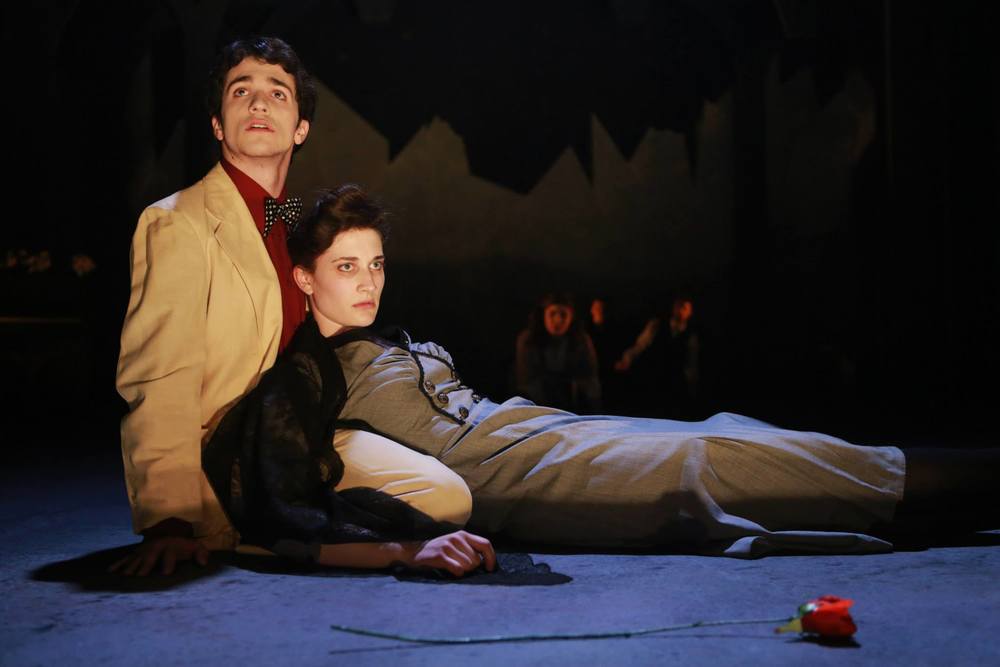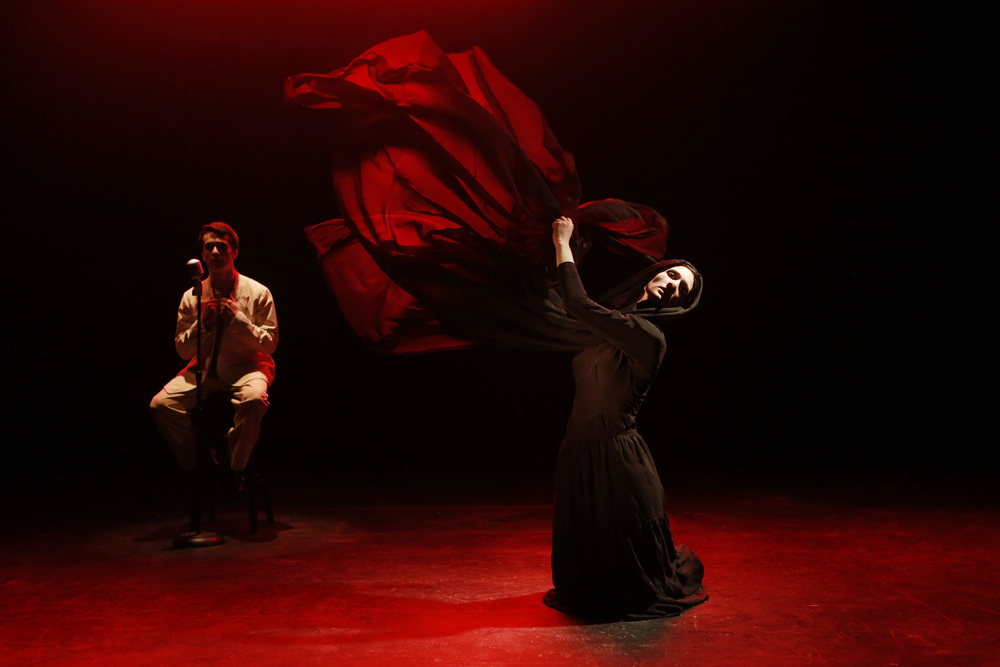
Honoring Lives Gone Too Soon
By: Ziggy Schulting ’18
This spring, two fearless directors and an ensemble of over twenty actors collaborated to honor the remarkable life of poet and playwright Federico García Lorca, in the only way that seemed apt—through theater, love, language and art. With the help of a phenomenal crew, the Janet Kinghorn Bernhard Theater was transformed into the Spanish countryside of the late 1930s. In the midst of a minimalistic set, simplistic color scheme and primarily gray scale costuming, this production came to life through its sharp, pleasing aesthetic, talented actors, and unparalleled language.
The foundation of this glorious adaptation was the wonderful vision of two talented directors, Will Bond and Carolyn Anderson, and Federico García Lorca’s Blood Wedding. Written in 1932 and first performed in Madrid in 1933, theater critics often group the play with Yerma and The House of Bernarda Alba as the “Rural Trilogy.” The famous tragedy is about The Mother (Hallie Christine ’15) who has lost her husband and son and now fears the loss of her last remaining son (Patrick Stanny ’15) when she discovers his intention to marry. In this drama of waylaid love, Lorca plays out the conflict between individual wishes and societal expectations.
Federico García Lorca was born on June 5th, 1898 and had his life taken from him in August of 1938 when he was executed by Nationalist forces during the Spanish Civil War. Lorca is considered by some to be the greatest Spanish poet and playwright of the 20th century—and Blood Wedding serves as a fantastic representation of Lorca’s life and work because it incorporates song, chant, poetry, music, and rhythm. And Skidmore’s production certainly did all these disparate elements justice, as Skidmore College Theater’s Blood Wedding was undeniably a production to be seen, heard and felt.
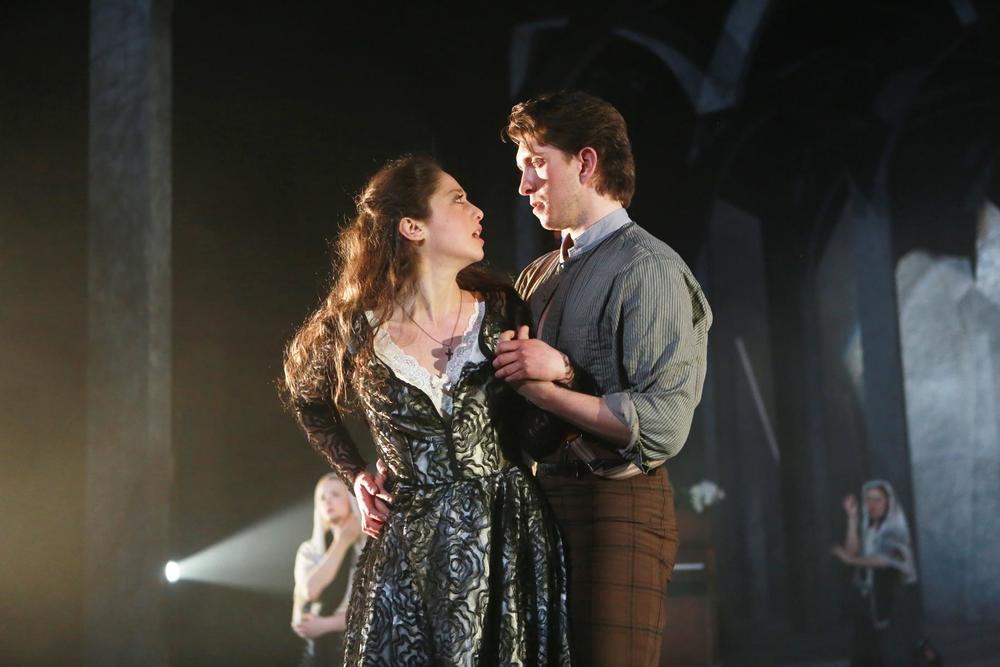
The heart of the tragedy exists between Leonardo (Henry Hetz ’15) and The Bride (Alex Chernin ’15), once lovers who are now separated by time and other external circumstances. At the play’s beginning, Leonardo is married (his wife portrayed by Miranda Park ’17), and The Bride is about to marry The Bridegroom, The Mother’s only remaining son. As opposed to a play whose actions appear mundane and similar to everyday life, Lorca’s audience witnesses non-realistic and anti-naturalistic techniques with characters like The Moon (Will Clark ’16) and Death (Daniella Deutsch ’17)—and, in this particular production, a number of appearances from Lorca himself (Shea Leavis ’17).
However, with over a cast of twenty members, this story could not have been brought to life without a seamless and cohesive ensemble. Specific dramatic moments and lives were marked by many memorable and stunning performances, such as those by The Bride’s Father (Woodrow Proctor ’16), The Servant Woman (Kate Glowatsky ’16), and The Neighbor Woman (Julianna Quiroz ’17). When asked about the collaborative aspect of the world of the play, co-choreographer and ensemble member Sydney Tennant ’18 remarked, “Will and Carolyn gave us so much freedom. Although it was challenging to sort through our ideas and build the show from the ground up, it was also incredibly rewarding as we ended up with a show that couldn’t have been created without every single person who was involved.”
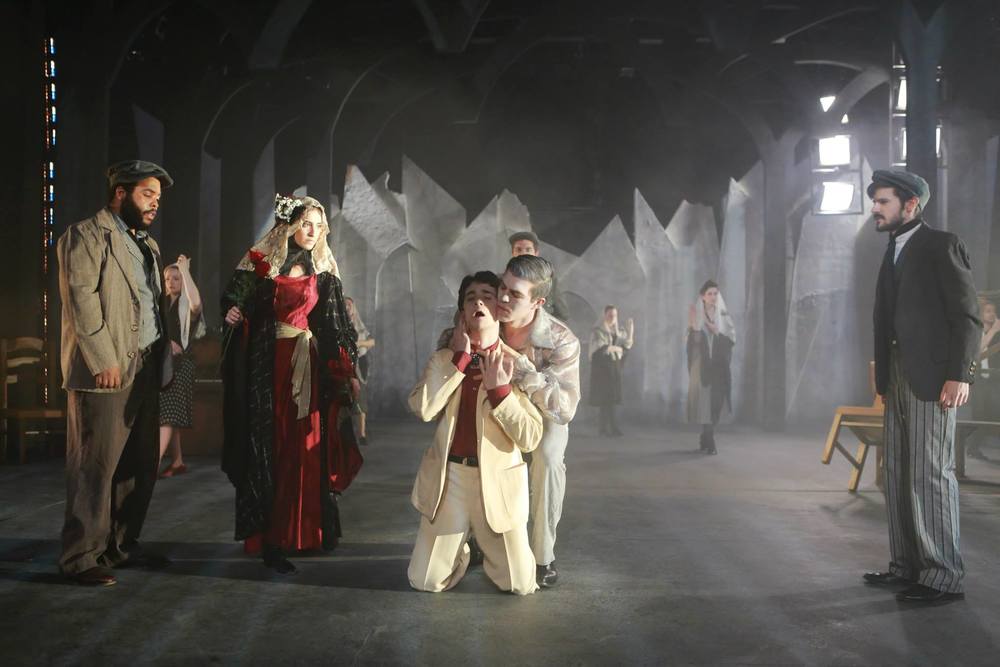
The idea for this production emerged out of the Collaborations course consisting of Skidmore senior theater majors, which was co-taught by Bond and Anderson in the fall. Several students who worked in the class were also a part of the production. Christine explained the Collaborations class and their show-making process as follows: “We made a lot of pieces that captured the essence of Blood Wedding or of Lorca during collaborations, instead of focusing on telling the specific story of Blood Wedding. I think this work carried over greatly to our production this semester. We were telling the story of Blood Wedding, but we were also just studying Lorca’s life and work, his situation in his time and how his writing reflects that.” This exploration certainly aided in the storytelling of Lorca’s Blood Wedding, as it enriched those involved with the course with an intimate understanding of the play’s context. Furthermore, it set the tone for a rehearsal process that would encapsulate the spirit of collaboration.
Though Blood Wedding is a tale of missed love and complicated familial issues, this particular production truly honed in on the historical context in which Lorca’s life—and the play itself—took place. Leonardo’s intolerance and inflexibility to bend to the ways of his community and rigid laws ultimately parallels the Spaniards who were resistant to social and cultural change during an era when such change was largely unavoidable. Chernin put it best when she spoke of this productions angle by saying, “Blood Wedding felt like our ensemble’s way of holding the ground and walls steady in a war stricken world. In our production, the company of underground actors that we created was holding on to the last semblance of creation and community in order to remain hopeful for a life outside of the Spanish Civil war—or any war.”
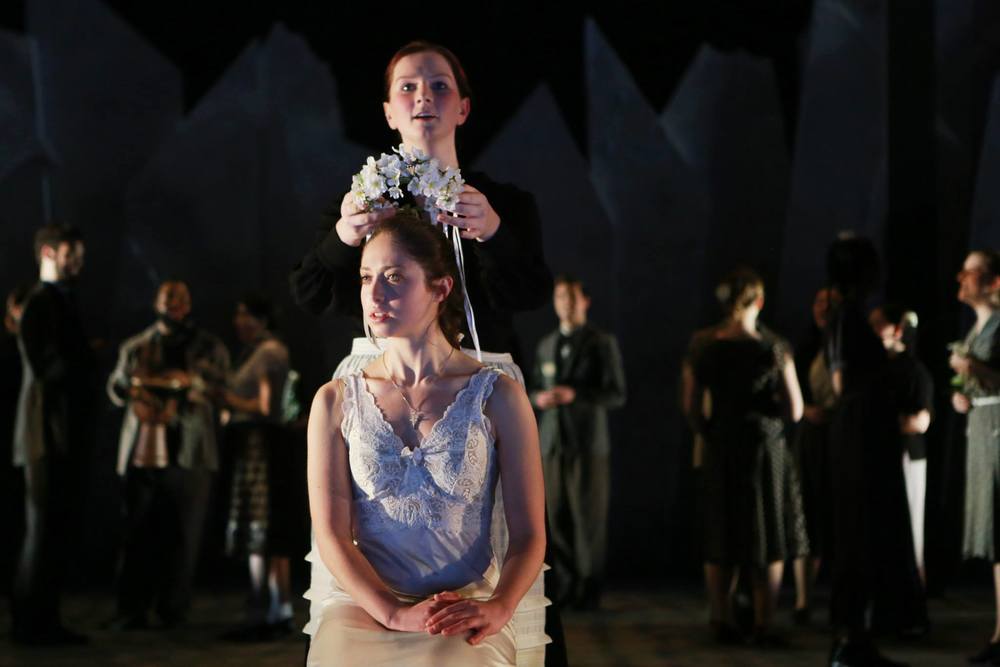
While the concept of war and Lorca’s life was vital to the production, it was Lorca’s unique style and text that formed the foundation of the process. Christine remarked, “This play has taught me a lot about what is theatrical. Lorca’s plays are a strange mixture of poetry and prose, realistic scenes and surreal soliloquies, dramatic encounters and funny little quips. And yet, his plays are so stageable, so watchable, even in their oddness and inconsistency. It has been a joy to tackle this challenging material, and I have come out all the better.” In this case, it seems the complexities of Lorca and his work have only aided in making this process all the more detailed and specific. This particular production did a truly wonderful job of working to incorporate both elements of realism and surrealism in the same manner Lorca managed to allow them to happily coexist in his writing.
Additionally, much praise and acclimation should be given to the wonderful work of the design team. From costumes, to lighting, to a remarkably clean stage design, it was impossible to walk away from this production without noticing the visually stunning effects created in such vacant space. The scenic design by Garett E. Wilson consisted of sharp edges of the background and the carpentry around the stage, and did a beautiful job of framing each scene to make a wonderful picture for the audience to enjoy. Wilson was also assisted by a group of talented student designers: Greer Duckworth ’15, Noah Samors ’15, and Brendan Sullivan ’15. What the bare stage so picturesquely prepared for was a transcendent lighting design created by Jared Klein. With very few props and minimalistic set in the production, Klein’s lighting truly helped aesthetically infuse each setting and scene in a way that effectively aided in creating a visceral experience for the audience.
Smart and wild investigations of Lorca and his life lead Bond, Anderson, and their cast to dream of a production that could include the beautiful language of his poetry and coexist in the jarring world of the Spanish Civil War. The ingenuity of the entire cast and crew truly did what the program’s Director’s Note suggested when Anderson and Bond agreed, “Our adaptation seeks in part to honor the life and remember the disturbing assassination of the poet and do this within the context of what is considered one of his greatest plays”—and that’s exactly what it did.
